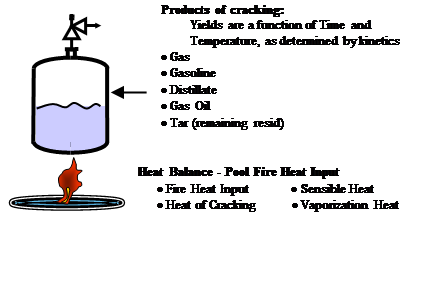

Heat
of Cracking Determination for Heavy Petroleum Stocks
Heavy petroleum resids are
processed in refinery atmospheric columns, vacuum columns and other equipment.
If a fire occurs on the columns, the column may experience temperatures
exceeding the design temperature with large relief rates.
In actuality the resid may experience
mild thermal cracking into lighter components thus lowering the vaporization
temperature. Further, the heat utilized to crack the resid will not be used for
vaporization and thus reduces the fire relief rate.
Determination of the heat of the
cracking reaction is key but has been historically difficult due to the large
amount of computations. Indeed, seventy
years ago, Professor W.L. Nelson, in the 3rd edition (1949) of his
classic book "Petroleum Refinery Engineering", remarked that “Although
the method outlined [for heat of cracking] …is correct from the standpoint of
theory, it is hardly satisfactory for practical work unless great care is
used.” However, recently simulators have
been developed that can handle the computations.
This paper will outline a
method to characterize the resid and products and use them to determine the heat
of cracking. Heats of cracking at different cracking temperatures will be
presented and compared against experimental data. The method is practical yet
theoretically rigorous, utilizes publicly available information, and is sufficiently
accurate for pressure relief determination.
 |
.
Presenter(s)
Language
Pricing
Individuals
| AIChE Member Credits | 0.5 |
| AIChE Pro Members | $19.00 |
| Employees of CCPS Member Companies | Free |
| AIChE Graduate Student Members | Free |
| AIChE Undergraduate Student Members | Free |
| AIChE Explorer Members | $29.00 |
| Non-Members | $29.00 |
